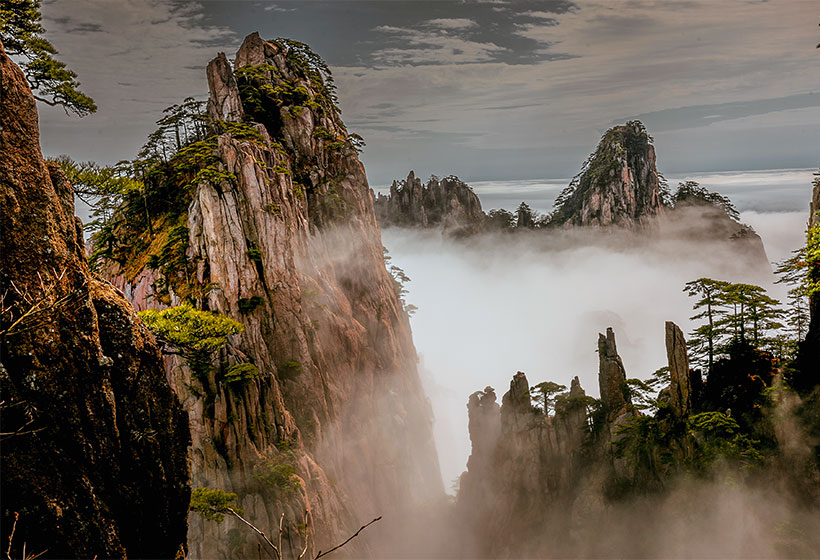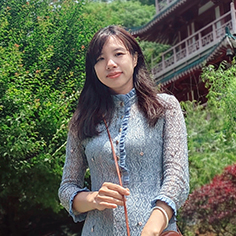Short Introduction to Huangshan Local Culture: History, Nation, Diet, Architecture, etc.
Brief Introduction of Huangshan Culture
Huangshan City is located in Anhui Province and was historically known as Xin’an, Shezhou, and Huizhou. It lies at the junction of three provinces: Anhui , Zhejiang, and Jiangxi, bordering Jingdezhen and Wuyuan County of Jiangxi Province to the southwest, Kaihua County of Zhejiang Province to the southeast, and Xuancheng City of Anhui Province to the northeast. The world-renowned Huangshan Mountain (Yellow Mountain), spans across Shexian County, Huangshan District, Xiuning, and Yixian County.
In 1987, the former Huizhou region was abolished and restructured as Huangshan City, named after its iconic mountain. Covering a total area of 9,678 square kilometers, the city had a permanent population of approximately 1.317 million as of the end of 2024.
Huangshan is the birthplace of ancient Huizhou culture, with a history of over 2,200 years. It is home to the UNESCO-listed Yellow Mountain and the ancient villages of Xidi and Hongcun.
Famous for its odd-shaped pines, sea of clouds, hot springs, and Huizhou-style architecture, Huangshan also delights visitors with its rich culture and delicious Anhui cuisine. A perfect blend of natural beauty and heritage, it welcomes travelers from around the world.
History
The origins of civilization in Huangshan can be traced back over 5,000 years. As early as the Neolithic Age, early settlers in the region developed a unique indigenous culture. In 221 BC, after the unification of China under Emperor Qin Shi Huang, the counties of Yi and She were established in the Huangshan area. This marked the beginning of the region’s recorded administrative history.
During the Sui and Tang dynasties, the Huangshan region was designated as Shezhou. In 1121, during the Xuanhe reign of Emperor Huizong of the Song Dynasty, Shezhou was renamed Huizhou. The prefecture governed six counties: Shexian, Xiuning, Yixian, Qimen, Jixi, and Wuyuan.
In 1645 during the Qing Dynasty, Huizhou Prefecture came under the jurisdiction of Jiangnan Province. In July 1667, Emperor Kangxi established Anhui Province, named by combining the first characters of Anqing and Huizhou. Huizhou Prefecture was then incorporated into Anhui.
After the founding of the People’s Republic of China in 1949, the Huizhou Special District remained part of southern Anhui.
In April 1988, Huangshan City was officially established as a prefecture-level city, administering three districts Tunxi, Huangshan, and Huizhou and four counties Shexian, Xiuning, Qimen, and Yixian.
Region Culture
Huizhou Merchants
Huizhou merchants, or Huishang, were renowned for their integrity, diligence, and sharp business acumen. Most began with modest means, gradually building their wealth through hard work and smart trading—many eventually becoming affluent salt merchants. As one of the most influential merchant groups during the Ming and Qing dynasties, they were as prominent as the Shanxi merchants (Jinshang), dominating China’s commercial world for over 500 years. Their presence was so widespread that a saying emerged in the Jiangnan region: Huizhou merchants are everywhere.
Hui-Style Architecture
Huizhou architecture is known for its whitewashed walls, grey-tiled roofs, and intricately carved brick archways. The most iconic structures include residences, ancestral halls, and memorial archways, often referred to as the "Three Masterpieces of Huizhou Architecture." Famous examples can be found in villages like Hongcun and Xidi.
The layout typically follows a central axis with enclosed courtyards, reflecting the principles of yin-yang balance and harmony with the five elements. These inward-facing homes prioritize both privacy and practicality. Central courtyards, or "sky wells", allow light and air to flow in, while also collecting rainwater—symbolizing wealth in Chinese culture.
The craftsmanship of brick, wood, and stone carvings in Huizhou architecture is exceptionally refined, with some carvings so delicate they are finer than a strand of hair. The motifs range from flowers, birds, and fish to folk tales and historical figures. These intricate details are often found on door frames, window lattices, and eaves, serving both as artistic decoration and practical features for ventilation and security.
The horse-head wall, also known as a fire wall, is one of the most distinctive features of Huizhou architecture and a gem of traditional Chinese building design. These towering walls serve a practical purpose by preventing the spread of fire between adjacent houses, while also creating a striking visual rhythm with their staggered heights.
When viewed from above, the rooftops form a dynamic pattern resembling a herd of galloping horses, symbolizing prosperity and the flourishing of family lineages.
Folk Culture
Fish Lantern Festival (Xiyu Lanterns): is a well-known traditional folk activity in Huangshan, dating back to the Ming Dynasty. Every year from the 13th to the 16th day of the first lunar month, villagers hold a four-day parade of giant fish-shaped lanterns. The event symbolizes abundance and good fortune in the new year, as the word "fish" (yú) sounds like "surplus" (yú) in Chinese, conveying the wish for prosperity year after year.
Chongyang Temple Fair: is another important traditional folk event in Huangshan, usually held on the Double Ninth Festival (the ninth day of the ninth lunar month). Originally a religious gathering to worship the deity King Zhou Bodhisattva, it has gradually evolved into a lively rural trade fair. Today, the fair features a variety of performances and cultural activities, including opera shows, embroidered ball throwing, and Mulian Opera—a folk drama rooted in filial piety. It’s a vibrant celebration of tradition, community, and local heritage.
The Dragon Boat Festival (celebrated on the 5th day of the 5th lunar month): is marked by traditional activities in Huizhou, such as making zongzi (sticky rice dumplings), crafting fragrant sachets, and performing Zhong Kui dances and staff drum rituals. These customs are believed to ward off evil spirits, bring blessings, and ensure the safety and well-being of the villagers.
Huizhou Bench Dragon Dance: is a unique folk tradition typically performed during the Spring Festival and Lantern Festival. Long wooden benches are connected end to end to form the body of a dragon, with each household contributing one segment, symbolizing family unity and clan cohesion.
At night, the dragon is brought to life with lanterns mounted along its body, winding through the village to the sound of drums and gongs. The illuminated, undulating dragon creates a spectacular and festive scene, showcasing the community’s shared spirit and cultural heritage.
Diet Style
Anhui cuisine is one of the eight major cuisines in China. Huangshan dishes are a part of Anhui cuisine. Anhui dishes are characterized by frying, stewing, steaming, and arts of blending. They attach great importance to the time of cooking and promote original tastes. Generally, people add a lot of oil to dishes. The dishes are also rich in color. Visitors to Huangshan should definitely taste the local special dish “fragrant mandarin fish,” which is blended with fresh or dried bamboo shoots.
Read More Local Food and Restaurants in Huangshan »
Cultural Heritage
Huangshan is home to the UNESCO-listed Yellow Mountain and the ancient villages of Xidi and Hongcun, both recognized as World Cultural Heritage Sites. The city boasts a wealth of cultural heritage, including 7 elements inscribed on UNESCO’s Representative List of the Intangible Cultural Heritage of Humanity, 24 national-level, 78 provincial-level, and 148 municipal-level intangible cultural heritage items. These span traditional opera, dance, craftsmanship, and cuisine,such as Mulian Opera, inkstick making, and the construction techniques of Huizhou-style architecture etc. all of them reflect the depth and richness of Huizhou’s historical legacy.
Customize Your Unique Huangshan Tour

If you are interested in one of the Huangshan itineraries mentioned above, please contact us, and we will be happy to customize it and provide a quote tailored to your preferences.
Alternatively, if you would like to customize your Huangshan Tour, please visit our Huangshan Tour Customized Center. We assure you that you will receive a reply within 24 working hours.
Informative Articles for Huangshan  Huangshan
Huangshan
 Huangshan
Huangshan - Interesting Experiences and activities in Huangshan that can be put into your trip!
- Selected travel itineraries in Huangshan for your reference
- Customizable Huangshan Tours
- Top attractions in Huangshan
- Huangshan historical weather, the best time to visit Huangshan
- Brief introduction to the Huangshan local culture
- Unique perspective: best interesting things to do
- Top destinations: best places to visit in Huangshan
- Local food: what to eat while traveling in Huangshan
- Luxury hotels: where to stay in Huangshan
- Quick and time-saving to Customize a Huangshan Trip
GREAT FAMILY CHINA TOUR
JULY 2024 We wanted to thank Grace at China Culture tour for organizing a great tour of China. We enjoyed our Beijing - Xian-Chengdu -Guilin -Yangshuo - Shanghai trip. Our local guides Bruce in Beijing, Susan in Xian, Jane in Chengdu, Mike in Guilin and Mary in Shanghai took care of us…read more details »
Teng Han L from SINGAPORE
Ready to Create a Unique Dream Travel?


